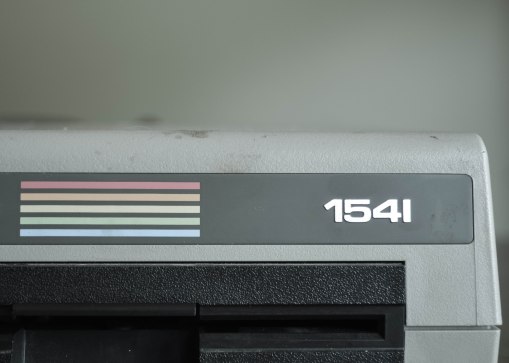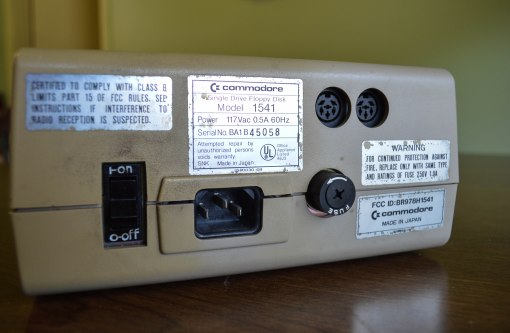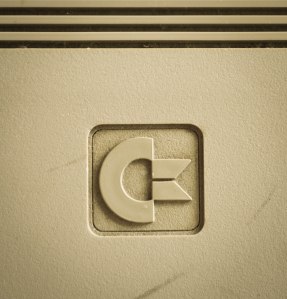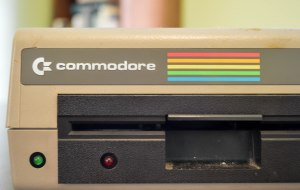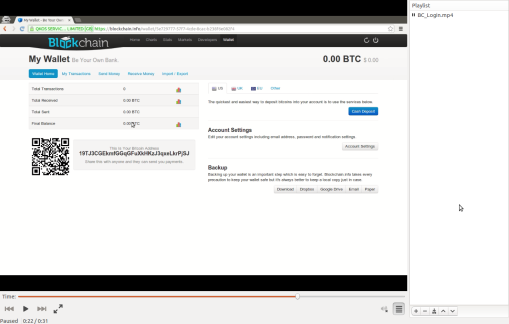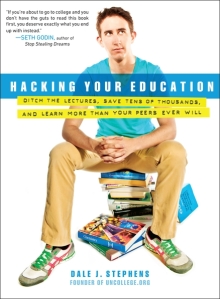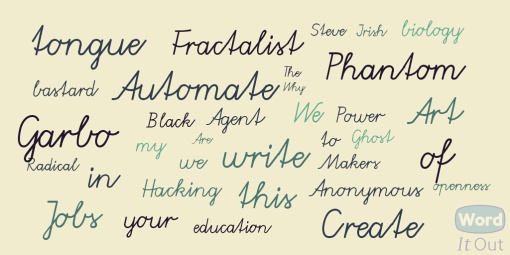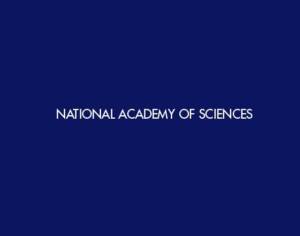
Credit Allvoices
23&ME GENETIC TESTING UPDATE, WOW!
Below is a reprint of my story about my 23&me experience from Allvoices. At the time I’d just tested with 23&me. It was an incredible experience. The information added to my life. Dollar for dollar it’s been worth it. It’s been several years since the testing. Since the latest controversy about 23&me I wanted to reprint my story for others to read. The graphic above was added to my site after an enthusiastic reception by thousands of readers. I have borrowed it for my site asking forgiveness rather than what ever it is you ask for, for using the graphic but it feels right. So, read on.
Somethings I’ve learned since the story, of course, but most everything I wrote is spot on several years later. For instance I’m pretty darn sure now that my father is my real father, and anyone who knows me could’ve told me that but hell I wanted to know. I found out that I’m related to my son-in-law, quite Appalachian, there. I’m not Jewish I’m 99% northern European with 2% American Indian. On my father’s side, my two brothers tested, and they are 99% European, 1% African.
Our family shows high to average amounts of Neanderthal genes. Now tell me would you ever get that kind of information in a doctor’s office? Early on the test didn’t say specifically that we had Neanderthal genes. It showed up in other DNA programs that enthusiasts had built to study their genomes. I was hesitant to add that we might have Neanderthal genes at the time. Later 23&me added graphics to show everyone who tested how much or how little Neanderthal genes they had inherited. It was great fun!
Good news for Alzheimer’s genes, low risk. I show an intolerance to wheat. That was the biggest find for me. I’d toyed with starting and stopping eating wheat products, even though wheat will send my brother to the emergency room, I still doubted that I had a problem because the symptoms were so hard to pin down. Stopped the bread, the wheat, and I am so happy to say I feel not just better for it, but wow! I’ve bought some Glutenease now, and take it when I eat a verboten pizza or roll, but I can say that knowing that I’m prone to Crohns Disease changed my life.
Sure some of the information might change in the future when more is known, and some of it might not be correct, but very large part of it made sense to me — it rang authentic. I got more diverse, more useful information, more interesting information from the 23&me test than a doctor would have time or resources to test for, for the small price of $99. When does a medical customer ever get out of a doctor’s office for $99? And I didn’t expect a medical outcome. I don’t expect a doctor to know everything or tell me everything about my body, because that isn’t possible. Why expect perfection from an early effort at genetics? We are early adopters who realize the potential. As early adopters we were a group mostly of educated professionals. We were not rubes who had to be protected. For me this test was great fun! I didn’t expect to be wowed! but I was and still am.
I’M AN EVERYDAY JOE WHO TESTED HER DNA WITH 23 & ME
I’m not an adoptee looking for parents, I’m not dying from a genetic disease that needs a fast cure, I’m not a student molecular biologist or an armchair scientist, I’m definitely not a genealogist tracing bio-ancestors. I am not über educated.
I’m one of the curious who came to 23and Me, a genetic testing site, co-founded through what looks like a gutsy move by biotech analyst Anne Wojcicki, and imbued with the aura of Google and 23andMe investor, Sergey Brin , Co-Founder of Google.
I came to look and stayed.
I waited until testing fell to one hundred dollars, a price too good to pass up. I’d call myself a pioneer homesteader; one who came after the true pioneers who blazed a trail for me starting in 2007 on 23andMe, who did a lot of the hard work defining the forums, and asking questions of the staff, and asking for changes that improved the site.
And, I brought my family with me, in all our dysfunction and scientific ignorance. We are important, though, and those like us are important because we are a trend. We appear when an idea has found its time and its time has come. Personal genetics’ time has come, and along with it, predictive medicines’ time has come. And, I don’t think it’s the vision that Pharma and doctors nor the FDA had in mind. Nevertheless, plug the dike all you like this personal genome thing is too cool, too personal, too useful, too empowering to overlook or diminish.
Three months ago I paid for the 23andMe genetic test that included risk percentages for illnesses, including breast, colon, and skin cancer, which I was sure I would never have. No one in my family had them. Everyone I knew died of heart attack, rheumatoid arthritis, diabetes, COPD or aortic aneurysm, and something odd my grandmother had that included dementia that I could never accept as Alzheimer’s.
I sort of feared Alzheimer’s disease because my youngest daughter had already begun preparing mentally to care for me when-and-if, and I wanted to spare her that hell, which knowing me, she was pretty sure would be hell, but mostly, my family did not live long enough to get it, so I didn’t worry much about that either.
Three days after my sixty-fourth birthday, I got my results – the first results of many of my family who would test. I’d fretted the closer it got. I waited six weeks and in those weeks I had time to think about what I might find. I hoped that I would find Basque, a Spanish-French nationality, in my family. I read about the Basque and wanted to be one. I wondered about Aspergers and Autism or ADHD in some form, and was I Jewish?
Where did these odd questions and expectations come from? I don’t know but they did make more sense after I got my test, and found genes to match some of what I wondered about. I expected heart attack to be high up on the list. No surprise there. Not such a bad way to go for those you love, if it’s fast, and if I had to choose between Alzheimer’s and a quick exit, I’d take it. Yet, I wasn’t sure I wanted to know my risks the closer it got. And on the other end of it I wondered if the science was far enough along to get past my skepticism. Would all this be a hodgepodge of smoke and mirrors? Or would something valuable come of it?
I pretty much knew in my heart my father was my father, but I wanted to see it in pictograph, in black and white genetics, so I asked my brother to test. I had a night or two of fitful sleep around my birthday, two days before it posted, not from paternity worries but from risk factors I might not have anticipated; then when I saw my stuff post the angst disappeared, and curiosity and anticipation set in. It’s kind of like having your first child, and worrying you might not be able to do this thing, that maybe it wasn’t a good idea, and then you see the child, you hold the child, and it is so full of promise, you never think those things again.
In earnest, I mostly wanted to know why I was so eccentric. Born in a small, rural town in West Virginia, into an eccentric family that inordinately valued books and ideas, and into a family culture that was mostly alien to those around us, and into a family who was surrounded by Baptists and Pentecostals, but who were not outwardly religious in a traditional sense, and did not participate. I wanted to know why I was different. Why my family was different. Why my children were also different.
Some women and some people can drop themselves into a slot and fit like a key in a lock: click. I hadn’t found the door that fit with my key, and it didn’t look as if I would. On every Myers-Briggs personality test I scored as the rarest of rare, a female ENTP – a human salmon who swims against the current it’s whole life. I wasn’t sure how far research had gotten for personality traits but I’d at least wanted to see what the early research on personality said about my genes. Did I have the infamous DRD4 marker, for a risk taker; did I have a tendency for ADHD?
Why do I score so high in abstract thinking and seemed to lack the concrete ability to do more than basic math, yet loved math theory even though I could not fathom most of it? Did I have some kind of genetic glitch? Seriously.
And, the one medical issue I wanted to confirm was do I have the gene for Hashimoto’s autoimmune thyroid disease: too many in my family take thyroid hormone and are diagnosed with thyroid disease and autoimmune issues; my brothers, my sister, me, my children. It has taken a chunk of our lives. So I thought.
As I clicked on the left column, medical risks were listed first, and below that fun stuff like traits; color of eyes, tongue rolling, photic sneeze. Parkinson’s disease was the scariest to open. Alzheimer’s didn’t show up on 23andMe health risks at that time. I assumed I was okay (later results showed a decreased risk). I clicked on the locked Parkinson’s report, I sighed maybe, but I didn’t hesitate to click. I didn’t have the high risk gene marker. I let out a deep breath.
I quickly ran down my many high health risks: Celiac, high; Crohns disease, high; colon cancer, high; heart attack, high; no diabetes; Behcet’s disease, a red arrow pointing up. What is that? I look it up. It is more of an Arabic disease not common in the US, rare even, that helps me understand maybe my grandmother’s illness, but not where it came from. She wasn’t Arabic, and furthermore, our family isn’t Jewish; so I was a non-Jewish adult with a risk for a prevalent Jewish disease? Crohn’s disease?
Next Hashimoto’s thyroid disease, typical; plain old thyroid disease, typical; thyroid cancer, typical. If I didn’t have a high marker for thyroid disease was it possible that the diagnosis was wrong? Might that be why I’m having such a problem getting well? I’d spent most of this winter in bed, sick, fatigue, trying to get my thyroid levels to stop bouncing up and down from one lab to the next. I’d been sick since 1992, on and off. I didn’t see what I expected in health risks. No Hashimoto’s thyroid risk but plenty of other cancer and autoimmune disease.
Inexplicably, it wasn’t the cancer that upset me, even if I didn’t expect it, the thing that got me, was the alopecia, hair loss. I’d had a nightmare before I received the test that I had inch wide strips of hair missing from my head in corn rows, and a big pile of knotted hair stuck in my hairbrush, as huge as a toaster, and there it was alopecia, as one of my higher risks. Every time I brushed my hair after that I cringed until my daughter said you know that amount hair loss is normal.
I put the health risk area away for a month. Just put it aside, emotionally, and looked at Ancestry Painting and Relative Finder, and exchanged emails with genetic genealogists, some, who had been around since 2007, old timers, who were waiting breathlessly for the next boatload of 23andMe immigrants for them to compare to their genes.
On both sides, our family is from the US going back to the 1700’s. Yet, my brother is R1a1a, or northern European with 1% African genes. I am U3a1 or northern European on my mother’s side, descended from a very old clan of women from the Jordan area and the Caucasus Mountains, and maybe the Roma . And, I can say, if my mother resembled these women or acted like them, they have white-white skin with dark black hair and characteristically, are of a fierce, protective mothering temperament. Strong, independent women.
In Relative Finder I am related to a lot of males with Basque genes. On the female side I’m related to lots of Jewish women, and Bedouin. By now, I have nearly 800 relatives in Relative Finder of various degrees from third cousin to distant cousin. My brother is related to nearly the same number in his Relative Finder account. (Men automatically learn both their father’s and mother’s haplogroups or lines they are descended from. When women test, they find only their mother’s line, women have to test a father, brother or uncle to find their paternal line.)
I have quite few Brits for relatives, and some Irish, Finnish, German, Cuban, even a Macedonian. I’ve contacted maybe fifty people or they have contacted me about family genes that we share even though genealogy is not a favorite pastime for me.
After I downloaded my password protected gene cache from the 23andMe site – and burned it to a DVD – further searching with the help of the site not associated with 23andMe, took me to an Kamaran Island off Yemen where an ancient relative once lived.
And I had to ask myself if the Behcet’s mutated SNP (single nucleotide polymorphism), which can cause dementia like my grandmother had, and her mother had, could be sent down the line from earliest times from an ancestral migration through Arabia to reside in my body? Passed on through parent after parent through ancient times to modern times. I was thinking in terms of a few hundred years not thousands of years. It was a concept that was alien to me. What about Crohns disease. Did I have Jewish ancestors? I had no family history of Jewish family.
Since I knew nothing about genetics, and wanted to know the basics, I began reading. I read a book by Craig Venter [Unlink], genetic pioneer, A Life Decoded: My Genome: My Life, whose book I really enjoyed, and who I am guessing has about as much trouble fitting in sometimes as I do, and truly made me feel better about myself, and I read books about the imperfect, but perfectly interesting Watson, and his co-discoverer, Crick, Cambridge geneticists, who uncovered the DNA double helix, and a slew of other scientists, so I could understand some of what I was seeing, and appreciate what genetic scientists have accomplished to make this a personal biology.
I read fourteen books on the history of genetics and genetic biographies, like Misha Angrist’s book Here is a Human Being, and Bryan Syke’s Seven Daughters of Eve, and The $1,000 Genome: The Revolution in DNA Sequencing and the New Era of Personalized Medicine by Kevin Davies .
I Googled Geneticist George Church’s Personal Genome Project, and looked up DNA terminology, and asked genetic genealogists questions. I asked dumb questions that I knew were dumb but I wanted an answer. I asked smart questions, too. I asked questions as long as someone would answer them. I looked up each new gene or SNP that I found in the news. Still do.
Taking time to learn how to navigate 23andMe helped me understand that the 23andMe site is a layer upon layers of possibility, set up for the beginner to the enthusiast, to the researcher, and I could understand some of it, and could hope to understand more. I began to see it for the treasure the 23andMe site is with all the flaws that might be inherent in an early system. And when I saw my genome represented with my chromosomes on the screen in “browse raw data,” it was one of the most exciting experiences of my lifetime. I’ve stopped worrying over paternity. I’ve seen lots of things to explain my personality.
I don’t have DRD4. I do have genes associated with ADHD, Schizophrenia and Autism. I think I have the Neanderthal gene MCPH1. But don’t quote me on that. I’m still learning. I learned that I had gene MTCO1, which results in up regulation of marine oil that reduces adipose fat in the abdomen, which I’m guessing might mean that if I eat fish my metabolism will work better. I’ve learned that I’m meant to be lean. I’m sure these studies will be up for grabs and changes in the future. But that’s all right because I’ve begun thinking about my health and who I am differently because of the personal genome test, and the ease of use designed into 23andMe.
The biggest surprise was the changes I made to my health and to the way I think about the rest of my life. This test has changed my life. I had to take a closer look at Celiac and Crohn’s disease and consider that with that high a risk I had to give it some consideration. My brother had to have a special diet to control his celiac disease, and it had been years since he could eat wheat.
I was sick I wanted to get well. I’d already come to the conclusion that my well periods were due to the things I “didn’t eat” as opposed to what I did eat. My up and down health seemed to coincide with eating and not eating wheat foods. As a test, I ate fish and spinach and blueberries, and non-wheat breads, and suddenly I was no longer ill. Ill health that had dogged me, taken me to my knees, curtailed my business, and personal life; but my illness evaporated with the no-wheat diet.
The medication, thyroid hormone, I thought I would have to take for the rest of my life, was no longer necessary. I started swimming, walking, not sleeping most of the day, I could think clearly, I stopped going to the bathroom immediately after I ate. I cannot tell you how valuable this genetic test has been for me and for my daughter, whose health also gotten better with a no-wheat diet. I think it means a longer life for the both of us. I know it means that I have a better quality of life.
When I saw those risk numbers beside Crohn’s, I thought about my brother’s celiac disease, and realized, perhaps, many of the other high risk diseases might be an affect or part of a larger problem from wheat intolerance, and the subsequent inflammation, such as maybe, colon cancer, and inflammatory heart disease, and lupus, celiac disease, who knows? inflammatory breast cancer? Stomach cancer?
I quit wheat then and there. No, it wasn’t necessarily scientific, but I will not look back. I have had it out of my system for three months, now. When I eat it I know what to look for: swollen abdomen, diarrhea, flu like symptoms, gas, deep fatigue and sleepiness, and nausea. I would not have quit wheat if not for the 23andMe genetic test. I’d thought I might have a problem but always I rationalized myself back into garlic bread sticks and Danish filled pastry, and whole wheat cereal. I think the test may have saved my life in subtle and not so subtle ways. I have a life now, at least.
When 23andMe offered their kits for zero up front and a monthly subscription of $9.00 a month per person, this April, I bought five more kits for my family. In all I think we will have tested 11 family members and one non-family member, who will likely become related through marriage.
Over a year, my cost is $108.00 per relative. I didn’t particularly have the money at the time but I felt that I couldn’t afford not to grab this chance for other members of my family to be among the genetic pioneers. And, how soon would it be before the FDA decided to appropriate control of my family’s human genome to medical Machiavellians or expedient corporations, who don’t allow us to have access to our genomic information? The FDA hearings during April 2011 didn’t look promising. And could my grandchildren’s health and lives be changed with predictive medicine if our mutations were known?
I thought so. So, I agreed to allow 23andMe to study my data. My brother has done the same. My daughter abstained. Other family members have opted to not release their genome for study. I think it’s important that some of us do this. It isn’t for everyone but I’d like to think by 2020 that in some way my contribution helped my children and grandchildren live longer healthier lives.
If not, I will not have played it safe, and not played it greedy, I will have shared my genome with the hope that good comes from it – knowing that there are no guarantees in life. And, by then the FDA issue about whether an individual should own their own genome, uncensored or whether the government should own that information, and only a doctor should be allowed to access it, and charge the owner for each peek, should be a historical footnote.
It is my family’s decision, what we do with our genomic information, not the FDA’s, and because it is our decision, and because we can learn from our genome about our own biology, we might prolong our life, or improve our quality of life, and with predictive medicine, the medicine of the 21st Century, genetic information might change to accommodate not only my family of early adopters, but all people. I participated in 23andMe, January 24, 2011. After I tested my life changed, and my health changed for the better. I’d like to yell from the highest building. Go get tested. It might change your life. In some cases it might save your life.
To read Shirley Grose’s comments on the FDA regulating the human genome, May 2, 2011, go to http://www.regulations.gov, Docket number FDA-2011-N-0066, Comment Tracking Number: 80c3dc1d







